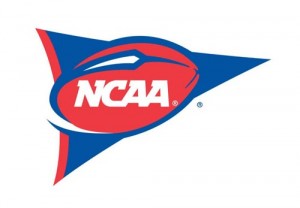 Every year around this time we hear about how one conference or another (especially the Big Ten – overrated and the SEC – underrated) is/was vastly overrated based upon their performance in 5 or 6 bowl games. It is worth remembering that the talking heads are paid not for their insight but for their entertainment value. Now it is true that there is a lack of quality out of conference scheduling and so the information in these 30 or so games is very very useful for estimation of team performance. (Here at Empirical Sports, we only pay attention to the PREDICTOR ratings from Sagarin which are available here.) However, the results of these bowls need to evaluated more intelligently than is usually done with simple wins and losses. As with almost all evaluations of games/players/teams, we need to consider what did we expect to happen. As an old football coach used to say “It’s not what you do, It’s what you do with what you have.”
Every year around this time we hear about how one conference or another (especially the Big Ten – overrated and the SEC – underrated) is/was vastly overrated based upon their performance in 5 or 6 bowl games. It is worth remembering that the talking heads are paid not for their insight but for their entertainment value. Now it is true that there is a lack of quality out of conference scheduling and so the information in these 30 or so games is very very useful for estimation of team performance. (Here at Empirical Sports, we only pay attention to the PREDICTOR ratings from Sagarin which are available here.) However, the results of these bowls need to evaluated more intelligently than is usually done with simple wins and losses. As with almost all evaluations of games/players/teams, we need to consider what did we expect to happen. As an old football coach used to say “It’s not what you do, It’s what you do with what you have.”
So what do we do. That is, how do we assess teams and their performance intelligently and appropriately. Well, the approach that we take below is to look at the expected number of wins for each conference in a set of bowl seasons and then look at the actual set of victories. The difference between the two is the over or underperformance. We went back and looked at the past three bowl seasons (2006, 2007 and 2008). To calculate the expected number of victories, we took the line from each game and from that determined the probability of winning for each team. Note that the total number of expected wins by a conference is just a sum of the probabilities for that conference. We calculate the probability for a win by taking the cumulative probability of (-1*points given/received)/7 from a standard normal distribution. E.g. in 2007, Texas Tech was a 5.5 point favorite over Virginia. Consequently, the probability that Texas Tech would win that game a priori was about 78.5%. Similarly Virginia had a 21.6% chance of winning before the fact. We used College Football News archive information for the point spread of a given bowl. 2006 can be found here. 2007 can be found here. 2008 can be found here.
2006 Bowls
Below is a table of conference performance for the bowls played after the 2006 season.
| Conference | Number of Games | Expected Wins | Actual Wins | Difference |
| ACC | 8 | 4.28 | 4 | -0.28 |
| Big East | 3 | 2.58 | 3 | 0.42 |
| Big Ten | 7 | 2.69 | 2 | -0.69 |
| Big XII | 8 | 4.29 | 3 | -1.29 |
| SEC | 9 | 4.58 | 6 | 1.42 |
| Pac-10 | 6 | 2.88 | 3 | 0.12 |
For the 2006-2007 bowl season, the consensus was that the Big East was a surprise going 3-0. The SEC performed the best and the Big XII performed the worst. Other than that most conferences performed exactly as we would have expected. The lost by Ohio State to Florida in the National Championship was a big one since a 10 point favorite should win about 87.3% of the time.
2007 Bowls
| Conference | Number of Games | Expected Wins | Actual Wins | Difference |
| ACC | 8 | 4.11 | 2 | -2.11 |
| Big East | 5 | 3.18 | 3 | 0.18 |
| Big Ten | 8 | 2.85 | 3 | -0.15 |
| Big XII | 8 | 4.49 | 4 | -0.49 |
| SEC | 9 | 5.76 | 6 | 0.25 |
| Pac-10 | 6 | 3.23 | 3 | -0.23 |
In 2007, no conference performed especially well though the SEC won 6 of their 9 bowls. However, this is just about what we would expect from them. Their expected number of wins across the 9 games was 5.76. The real conference that stands out was the ACC which only won two games when they were expected to win over 4 (4.11 exactly). Notice that while the Big Ten was roundly criticized for the performance of Illinois in the Rose Bowl and Ohio State in the National Championship game, the overall conference performance was on par with what we would expect. Also worth noting is that Illinois and Ohio State were both underdogs in their respective bowls and unlikely to win either game.
2008 Bowls
This brings us to the 2008 season. Results are given below.
| Conference | Number of Games | Expected Wins | Actual Wins | Difference |
| ACC | 9 | 4.47 | 4 | -0.47 |
| Big East | 6 | 3.66 | 4 | 0.34 |
| Big Ten | 7 | 1.36 | 1 | -0.36 |
| Big XII | 7 | 4.92 | 4 | -0.92 |
| SEC | 8 | 4.02 | 6 | 1.98 |
| Pac-10 | 5 | 3.40 | 4 | 0.60 |
What stands out here is the performance of the SEC. They did very well. Better than we would have expected. The Big XII did poorly (and it would have been much worse for the Big XII had Mizzou not rallied late to beat Northwester). Again all of this is relative to what we would have expected. Since we started with the Big Ten, we’ll end there. Their performance this bowl season was below average but not out of line with what we would have expected given who was playing whom. It should have been no surprise that Penn State and Ohio State would lose. Both were big underdogs with little expectation of winning.
Some Overall comments
Another factor that is worth considering as we look at the results overall across the three years is that the Big Ten is consistently playing up in competition. Several reasons for this are possible but most are likely due to the number of fans that will travel and the number of TV sets in Big Ten states. Thus the Big Ten is often playing up (Big Ten No 3 vs Other Conference No. 2) and consequently they are not favored to win many games and, surprise, surprise, surprise, they don’t. A further analysis might include the total number of teams that were favored rather than totaling the expected number of wins but it is likely that we would end up with a similar conclusion to what we have stated here.




Leave A Comment